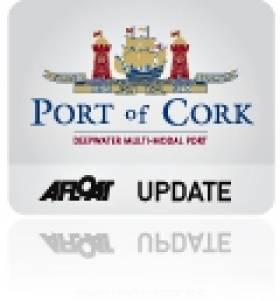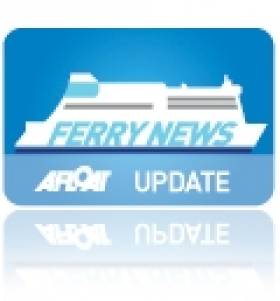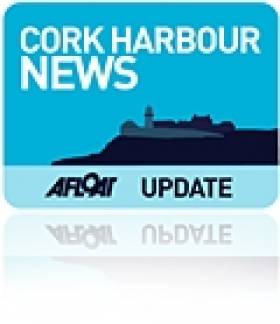Displaying items by tag: Cork Harbour Open Weekend
Cork Harbour Open Weekend & Dockyard Photo Exhibition
#CorkHarbour – Cork Harbour Open Weekend (14-15 September) as previously reported will also include a Harbour Photographic Exhibition of close to 200 photographs covering all aspects of the development of Cork Dockyard, the ships built and repaired.
The Cork Dockyard Ships & Shipbuilding photo exhibition sponsored by the Port of Cork Company was launched last week in advance of the Verolme Workers Gathering Weekend and is currently on view at Cobh Heritage Centre until 15 September.
The photographic display also includes photographs of the shipyard workers tracing the strong local history of shipbuilding in Cork Harbour, which was recognised at a ceremony held last weekend at the former Verolme Cork Dockyard, now the site of a ship-repair only business.
Meanwhile, Cork photographer Robert Bateman whose original work features in the exhibition has published a fascinating gallery online to celebrate the Verolme Workers Gahering weekend. View the gallery here.
Ferries Great and Small during Cork Harbour Open Weekend
#FERRY NEWS – Coinciding with Cork Harbour Open Weekend, will be the regular departure today of Brittany Ferries 'flagship' Pont-Aven (2004/41,748grt). The cruiseferry which features an indoor swimming pool, is scheduled to depart later this afternoon, writes Jehan Ashmore.
The cruiseferry operates on the shortest Irish-French route, taking 14 hours to reach the Breton port of Roscoff. The ferry only calls to Cork (Ringaskiddy) on Saturday's, on the seasonal-service which is to cease sailings in November. Currently the company has a single fare from €70 per person based on a car plus four passengers including a 4-berth inside cabin, for information click HERE.
While on a domestic front, services running within the waters of the natural harbour, are provided by Cork Harbour Cruises, where the tender Spirit of the Isles runs between Cork City centre downriver to Cobh. In September, sailings depart Cork at 11am (Saturdays and Sundays). The operator also provides tours beyond Cobh and a Spike Island tour. For details visit: www.corkharbourcruises.ie/tours.php
During the Cork Harbour Open Weekend, there will be free ferry (RIB based) shuttle services run by Whale of A Time, which will serve on a circuit throughout the lower harbour (on both days 12noon-3pm), for further details click HERE.
Countdown to Cork Harbour Open Weekend
#CORK HARBOUR – The Cork Harbour Open Weekend (15 & 16th September) as previously reported on Afloat.ie, will be a fun-filled action packed programme for all with activities on and off the water.
The weekend is a great opportunity for people to see exactly what Cork Harbour has to offer, with the second largest natural harbour in the world playing host to the annual Cobh to Blackrock sailing race, kayaking on the River Lee, crab fishing in Cobh and a free open day at the National Maritime College of Ireland (NMCI) in Ringaskiddy.
In Cork city, the Irish Naval Service CPV L.E.Ciara (P41) will be open to the public for free tours on the Saturday and Sunday.
To celebrate Cork Harbour Open Weekend, Spike Island is offering a family day out on the Island with live music, children's entertainers and an opportunity to walk on the recently completed Walking Trail around the perimeter of Fort Mitchell with stunning views of Cork Harbour.
For the latest news and of the other programme activities and events lined-up for the weekend, click HERE.
A downloadable programme including a map of the free ferry shuttle running (both days 12noon-3pm) throughout the harbour will help in planning a visit. For further details of the ferry, click HERE.































































